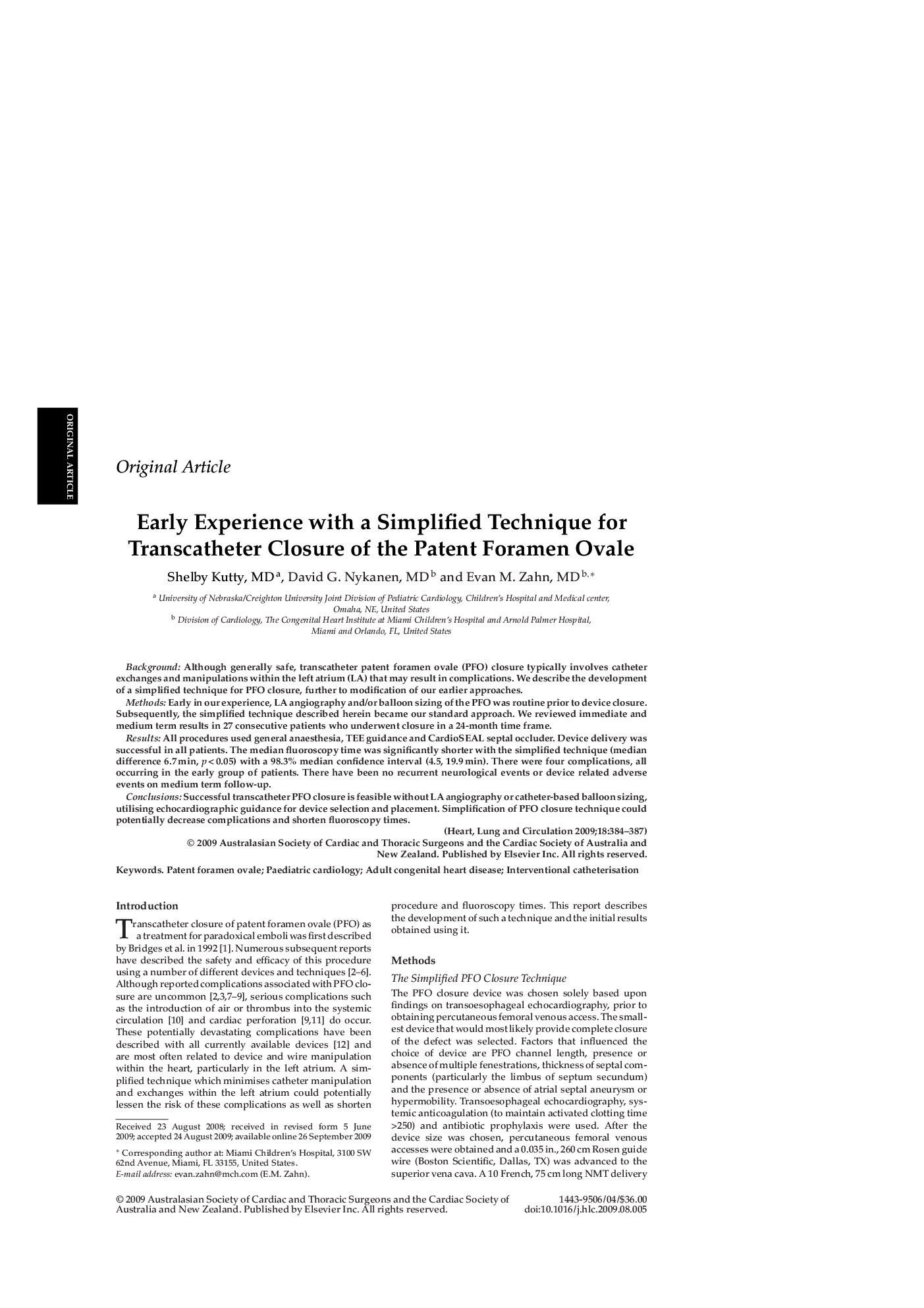| Article ID | Journal | Published Year | Pages | File Type |
|---|---|---|---|---|
| 2919498 | Heart, Lung and Circulation | 2009 | 4 Pages |
BackgroundAlthough generally safe, transcatheter patent foramen ovale (PFO) closure typically involves catheter exchanges and manipulations within the left atrium (LA) that may result in complications. We describe the development of a simplified technique for PFO closure, further to modification of our earlier approaches.MethodsEarly in our experience, LA angiography and/or balloon sizing of the PFO was routine prior to device closure. Subsequently, the simplified technique described herein became our standard approach. We reviewed immediate and medium term results in 27 consecutive patients who underwent closure in a 24-month time frame.ResultsAll procedures used general anaesthesia, TEE guidance and CardioSEAL septal occluder. Device delivery was successful in all patients. The median fluoroscopy time was significantly shorter with the simplified technique (median difference 6.7 min, p < 0.05) with a 98.3% median confidence interval (4.5, 19.9 min). There were four complications, all occurring in the early group of patients. There have been no recurrent neurological events or device related adverse events on medium term follow-up.ConclusionsSuccessful transcatheter PFO closure is feasible without LA angiography or catheter-based balloon sizing, utilising echocardiographic guidance for device selection and placement. Simplification of PFO closure technique could potentially decrease complications and shorten fluoroscopy times.
